Bhutan, known for its serene landscapes and ancient monasteries, also boasts a fascinating array of museums that capture the essence of its rich cultural and historical heritage. From the iconic National Museum of Bhutan in Paro to the vibrant Textile Museum Thimphu, these institutions offer a deep dive into the kingdom's traditions, arts, and royal history. Whether you're exploring the interactive Simply Bhutan museum or delving into the royal artifacts at the Trongsa Museum Bhutan, each museum provides a unique perspective on the Bhutanese way of life. For travelers eager to experience the depth of Bhutan's culture, visiting these museums is an essential part of any trip. Each location, rich with artifacts and stories, stands as a testament to Bhutan's enduring heritage and provides a profound understanding of this majestic country.
At Druk Holidays, we pride ourselves on being the premier choice for discovering the rich tapestry of Bhutan’s cultural heritage through its museums. Our expertly curated tours are designed to give you an immersive experience of the best museums in Bhutan, from the renowned National Museum of Bhutan to the vibrant Textile Museum Thimphu and beyond. Each tour is crafted with the intent to enrich your understanding and appreciation of Bhutan's historical and artistic legacies, ensuring you have a deeply engaging and educational visit. With Druk Holidays, you're not just visiting; you're connecting with the heart and soul of Bhutan through its museums.
National Museum of Bhutan (Paro Ta Dzong)
Situated in Paro, the National Museum of Bhutan is housed within the ancient Paro Ta Dzong, a historic watchtower that was converted into a museum in 1968. This circular fortress-like building is a prominent cultural icon that offers panoramic views of the Paro valley. The museum serves as a custodian of Bhutanese cultural heritage and provides insights into the country's rich history and vibrant traditions.
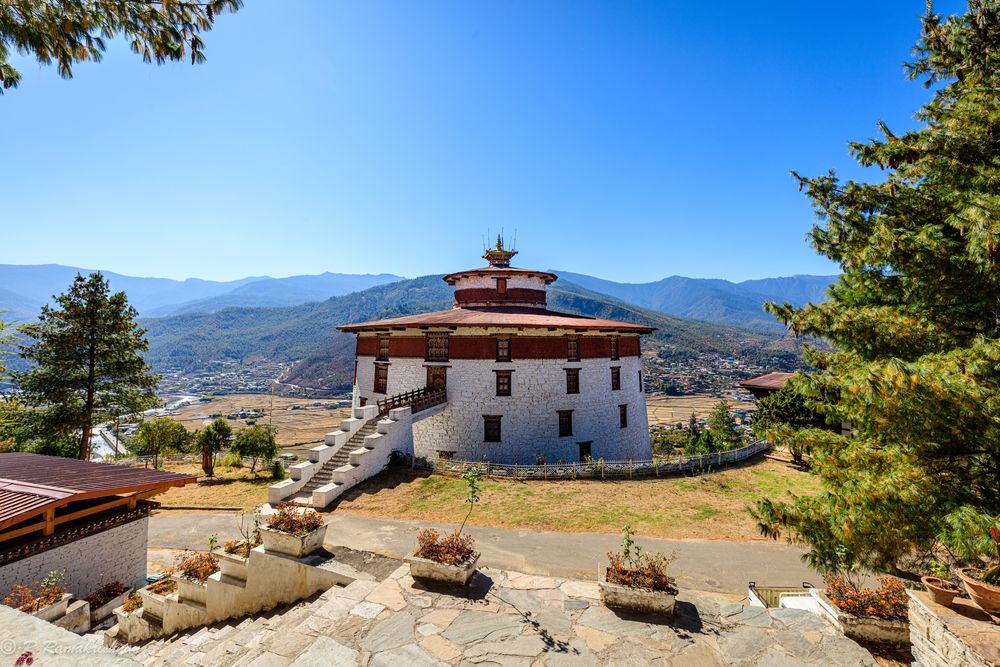
- Architectural Marvel: The unique circular structure of the Ta Dzong, originally a watchtower for the Paro Dzong, offers a distinctive architectural experience.
- Diverse Artifacts: Houses an extensive collection of over 3,000 Bhutanese artworks, including thangkas, statues, and masks, some dating back several centuries.
- Cultural Exhibits: Features exhibits that showcase Bhutan's cultural diversity, from traditional costumes and jewelry to household items and religious relics.
- Ancient Weaponry: Displays an impressive array of ancient weapons and armors used in the battles of Bhutan’s past.
- Philatelic Collection: Boasts a rare collection of Bhutanese stamps, offering a glimpse into the innovative and artistic approach to philately in Bhutan.
- Natural History: Includes a section dedicated to the natural history of Bhutan, featuring flora and fauna native to the region.
- Rotating Exhibits: Hosts special exhibitions on various themes related to Bhutanese culture and heritage, which change periodically to engage repeat visitors.
- Panoramic Views: Provides breathtaking views of Paro valley from the museum, making it not just a cultural trip but also a visual delight.
The National Museum of Bhutan is more than just a museum; it is a gateway to understanding the depth and breadth of Bhutanese culture and history. A visit here offers a profound insight into the spiritual and artistic traditions that have shaped this Himalayan kingdom over the centuries. It remains a must-visit for anyone looking to delve deep into the heart of Bhutan’s heritage.
Folk Heritage Museum Bhutan
Located in the capital city of Thimphu, the Folk Heritage Museum Bhutan provides a fascinating glimpse into traditional Bhutanese rural life. This museum replicates a typical 19th-century Bhutanese farmhouse and is a living showcase of the age-old traditions, cultural practices, and daily life of Bhutanese families from that era. The museum not only preserves but also educates visitors on the historical and cultural aspects of rural Bhutan.
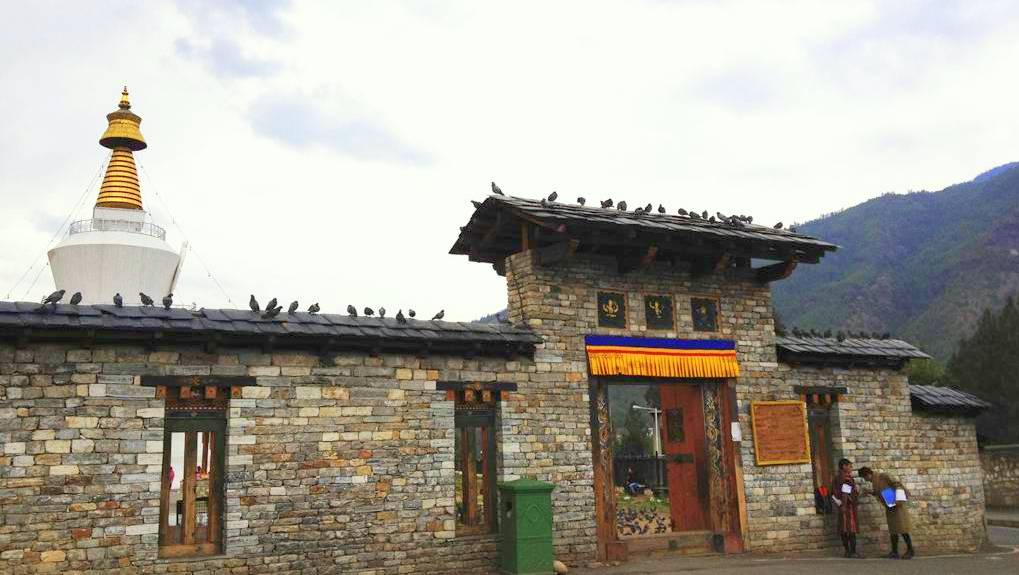
- Traditional Farmhouse Structure: The museum is set in a three-story, rammed earth and timber building, which reflects the authentic and sustainable architectural styles of rural Bhutan.
- Cultural Exhibitions: Displays include traditional household objects, tools, and equipment, offering insights into the daily lives of Bhutanese farmers.
- Seasonal Exhibits: The museum features exhibits that change with the seasons, reflecting the seasonal activities and festivities of a typical Bhutanese village.
- Agricultural Practices: A demonstration of traditional agricultural practices, including the use of age-old techniques and tools that are still used in some parts of Bhutan today.
- Culinary Traditions: Offers cooking demonstrations of traditional Bhutanese cuisine, using organic ingredients and age-old cooking methods.
- Traditional Arts and Crafts: Live demonstrations of rural crafts such as weaving and basket making, showcasing the skills that have been passed down through generations.
- Educational Programs: Conducts educational programs and workshops for both students and tourists to engage more deeply with Bhutanese rural culture.
- Herb Garden and Livestock: The museum grounds include a traditional herb garden and a small barn with livestock, providing a complete picture of rural life in Bhutan.
The Folk Heritage Museum Bhutan is an invaluable resource for anyone interested in the history of rural Bhutanese culture. It provides an immersive experience that connects visitors with the agricultural, culinary, and artisanal traditions of Bhutan, offering a deep dive into the authentic lifestyle of Bhutanese villages. This museum not only educates but also enriches the cultural appreciation of its visitors, making it a key attraction in Thimphu.
Textile Museum Thimphu
Situated in the heart of Bhutan’s capital, Thimphu, the Textile Museum celebrates Bhutan's rich tradition of textile arts. Established to promote and preserve the diverse weaving techniques that are integral to Bhutanese heritage, the museum showcases the intricate beauty and craftsmanship of Bhutanese textiles. It offers a window into the cultural significance of weaving in Bhutanese society, from historical patterns to contemporary designs.

- Masterpieces of Weaving: Displays a variety of handwoven textiles that are considered masterpieces of Bhutanese craft, showcasing complex patterns and vibrant colors.
- Live Weaving Demonstrations: Visitors can watch skilled artisans at work, weaving intricate designs on traditional looms, providing a live insight into the technical precision and artistry involved.
- Historical and Royal Textiles: Features a collection of antique textiles that includes personal garments of past kings and queens of Bhutan, offering a glimpse into the royal wardrobe.
- Regional Variations: Exhibits textiles from different regions of Bhutan, each with its unique weaving patterns, techniques, and uses, highlighting the diversity within Bhutanese textile art.
- Educational Programs: The museum conducts educational programs and workshops that teach visitors about the art of Bhutanese weaving, encouraging hands-on learning experiences.
- Thematic Exhibitions: Hosts thematic exhibitions that change periodically, focusing on specific aspects of textile arts, such as bridal wear, ceremonial costumes, or the evolution of patterns over time.
- Conservation Efforts: Engages in significant conservation work to preserve ancient textiles, including delicate thangkas and rare fabrics that hold cultural and historical value.
- Gift Shop: A gift shop where visitors can purchase authentic woven goods, books on Bhutanese textiles, and other souvenirs, which support local artisans and the museum’s operations.
The Textile Museum Thimphu is an essential destination for anyone interested in the art and culture of Bhutan. It not only highlights the aesthetic beauty of Bhutanese textiles but also emphasizes their cultural significance, showcasing how these fabrics are woven into the very fabric of Bhutanese life. Whether you are a textile enthusiast or a casual visitor, the museum offers a compelling narrative of Bhutan’s vibrant artistic heritage through its exquisite collections.
Royal Textile Academy of Bhutan
Located in Thimphu, the capital of Bhutan, the Royal Textile Academy of Bhutan is an esteemed institution dedicated to preserving and promoting the rich textile heritage of the kingdom. Established under the patronage of Her Majesty Queen Mother Sangay Choden Wangchuck, the academy serves both as a museum and a center for educational outreach, focusing on the conservation, exhibition, and promotion of Bhutanese textiles.
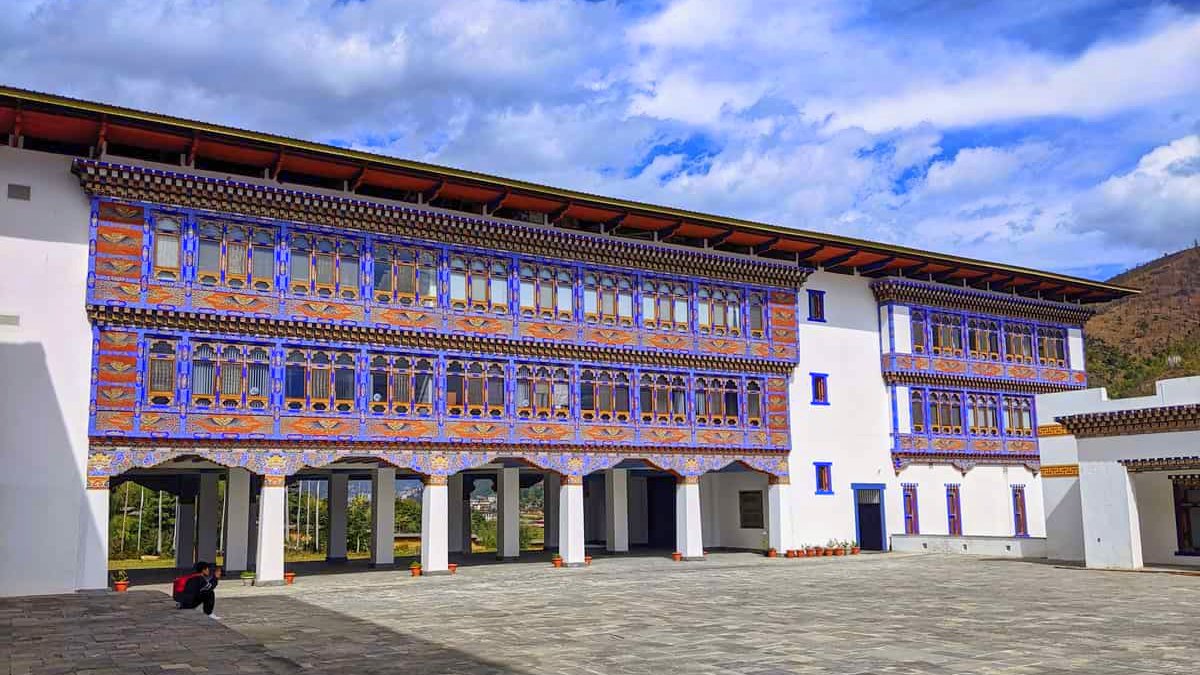
- Conservation and Promotion: Committed to conserving traditional Bhutanese textiles, the academy plays a crucial role in safeguarding these cultural treasures for future generations.
- Exquisite Exhibits: Features an extensive collection of Bhutanese textiles, showcasing everything from royal garments to religious draperies, each rich with symbolic meanings and artistic value.
- Weaving Techniques: Provides insight into various weaving techniques that are unique to Bhutan, such as the intricate Kishuthara, which is one of the most labor-intensive weaving styles.
- Live Demonstrations: Visitors can observe live weaving and embroidery demonstrations by master artisans, offering a firsthand look at the skill and patience required to produce these beautiful textiles.
- Educational Programs: Offers educational programs and workshops for students and textile enthusiasts, which include practical training in traditional weaving and dyeing techniques.
- Cultural Preservation: Acts as a cultural hub for the promotion of textile arts as a form of national heritage, involving local communities and artisans in its activities.
- International Collaborations: Engages in partnerships with international textile museums and cultural organizations to promote Bhutanese textiles globally, enhancing cultural exchange.
- Gift Shop and Gallery: The academy’s gift shop sells authentic, high-quality textile products made by local artisans, and its gallery hosts temporary exhibitions featuring contemporary textile art.
The Royal Textile Academy of Bhutan is more than just a museum; it is a vibrant cultural institution that plays a pivotal role in the cultural life of Bhutan. It provides a comprehensive view of the historical and contemporary significance of textiles in Bhutanese society, making it an essential visit for anyone interested in understanding the depth of Bhutan's cultural and artistic expressions. Through its efforts, the academy ensures that the art of Bhutanese weaving continues to thrive and evolve, even in the modern era.
Simply Bhutan Museum
The Simply Bhutan Museum in Thimphu is a unique and interactive living museum that offers a vibrant and engaging insight into Bhutanese culture and tradition. Designed to replicate a traditional Bhutanese village, this museum provides a hands-on experience where visitors can immerse themselves fully in the everyday life and customs of Bhutan.
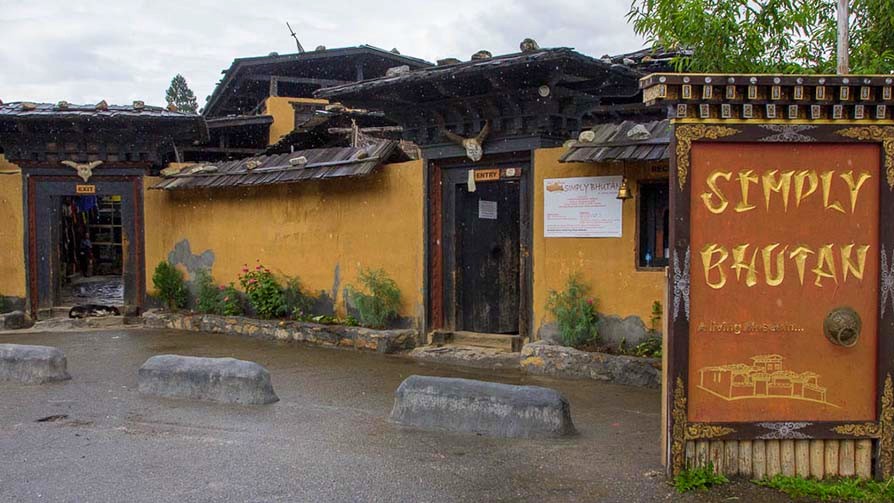
- Interactive Experience: Unlike conventional museums, Simply Bhutan allows visitors to actively participate in traditional Bhutanese activities, from archery and khuru (darts) to traditional dance and attire fitting.
- Cultural Performances: The museum regularly hosts cultural performances, including traditional Bhutanese dances and songs, which are integral to the nation's heritage.
- Traditional Architecture: The museum is built using traditional Bhutanese construction methods and materials, offering a glimpse into the architectural styles that have shaped Bhutan’s landscape.
- Authentic Cuisine: Visitors can taste traditional Bhutanese dishes at the museum’s restaurant, providing a flavorful extension of their cultural exploration.
- Craft Demonstrations: Artisans at the museum demonstrate various traditional crafts, such as thangka painting and sculpture, allowing visitors to observe these ancient arts in practice.
- Photographic Opportunities: The museum offers numerous picturesque settings ideal for photography, enabling visitors to capture memorable moments of their Bhutanese cultural experience.
- Souvenir Shop: A well-stocked souvenir shop offers a range of handmade products, from textiles to handicrafts, allowing visitors to take a piece of Bhutanese culture home with them.
- Educational Outreach: Simply Bhutan also engages in educational outreach, providing information and learning opportunities about Bhutanese culture to both locals and tourists alike.
Simply Bhutan Museum is an immersive gateway to the rich cultural tapestry of Bhutan. It provides a dynamic and interactive environment where visitors not only learn about but also participate in the traditions of Bhutan. This museum is an excellent destination for those looking to experience Bhutanese culture in a lively and engaging setting, making it a must-visit for anyone traveling to Thimphu.
Trongsa Museum Bhutan
Located within the historic watchtower of Trongsa Dzong, the Trongsa Museum Bhutan offers a deep dive into the royal history and the cultural heritage of Bhutan. This museum, also known as Ta Dzong, provides a captivating glimpse into the political history of Bhutan and its monarchy, with a particular focus on the Wangchuck dynasty which has been instrumental in shaping the nation's destiny.
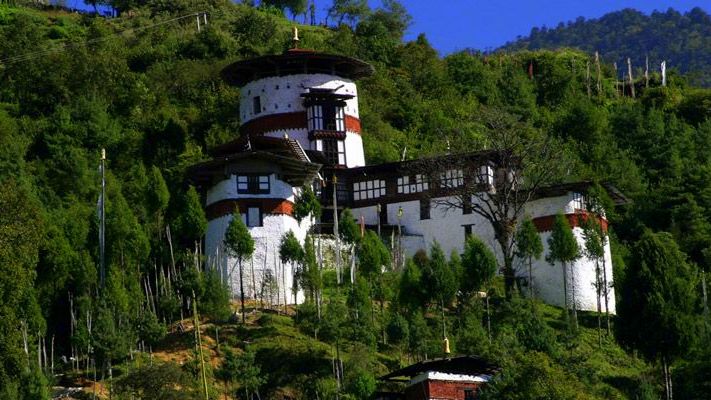
- Royal Heritage: The museum houses an impressive collection of artifacts related to the Bhutanese monarchy, including royal memorabilia, ceremonial robes, and personal belongings of past kings.
- Architectural Significance: Situated in the watchtower above the main Trongsa Dzong, the museum itself is an example of traditional Bhutanese architecture, offering stunning views of the surrounding valley and dzong.
- Historical Documents: Displays include a range of ancient texts and documents that trace the lineage and governance of the Wangchuck dynasty, providing insights into the political history of Bhutan.
- Sacred Relics: Features religious relics and artifacts that have played a significant role in the spiritual life of the kingdom, including ancient Buddhist manuscripts and ritual objects.
- Armory Display: Showcases a collection of historical weaponry used in battles by the Bhutanese army, reflecting the military history and strategic importance of Trongsa.
- Interactive Exhibits: The museum includes interactive displays that enhance visitor engagement, making the historical narratives both accessible and compelling.
- Cultural Festivals: Trongsa Museum organizes and participates in local festivals and events, providing visitors with a living experience of Bhutanese culture and traditions.
- Guided Tours: Offers guided tours that enrich the visitor experience with expert commentary on the exhibits and the history of the Wangchuck dynasty, making the complex historical layers more understandable.
Trongsa Museum Bhutan is not just a repository of artifacts; it is a gateway to understanding the rich historical tapestry and the evolution of governance in Bhutan. It stands as a testament to the country's royal heritage and its enduring cultural traditions, making it a must-visit for anyone interested in the deeper narratives of Bhutan's past and present. Whether you are a history enthusiast or a curious traveler, the museum offers a profound and enriching experience that connects you with the heart of Bhutanese cultural identity.
Essential Tips for the Museums in Bhutan
Visiting museums in Bhutan offers a rich insight into the kingdom’s unique culture and history. To ensure a fulfilling and hassle-free experience, here are some essential tips to keep in mind when planning to explore the museums in Bhutan:
- Check Opening Times: Bhutanese museums often have specific opening hours and may be closed on certain days of the week. It's important to check the latest opening times before you plan your visit, especially if you are traveling during off-peak seasons or on national holidays.
- Dress Appropriately: Bhutan has a conservative dress code, especially in places of cultural and historical significance. When visiting museums, dress modestly, covering shoulders and knees as a sign of respect.
- Photography Restrictions: Some museums may have restrictions on photography, especially of certain exhibits or inside the museum premises. Always check the museum’s photography policy and ask for permission if unsure.
- Hire a Guide: For a more educational visit, consider hiring a guide who can provide in-depth explanations of the exhibits and the history of the objects displayed. Many museums offer guided tours which can enrich your understanding of Bhutanese culture.
- Plan Your Visit During Festivals: If possible, time your visit to coincide with local festivals. Some museums host special exhibitions or performances during these times, offering a more vibrant experience.
- Utilize Audio Guides: Some museums offer audio guides which can be a great way to learn about the exhibits at your own pace. Check if this option is available and take advantage of it to enhance your museum experience.
- Budget Enough Time: Don't rush your visit. Bhutanese museums are not very large, but they are packed with detailed exhibits that require time to appreciate fully. Plan to spend at least a couple of hours in each museum.
- Interactive and Educational Activities: Look for museums that offer interactive sessions or workshops. For instance, the Textile Museum in Thimphu often has weaving demonstrations, while the Simply Bhutan Museum offers traditional Bhutanese games and food tasting.
- Shop for Souvenirs: Many museums in Bhutan have gift shops where you can buy souvenirs that are unique and reflect the cultural heritage of the region. These items can range from books about Bhutanese culture to hand-crafted artifacts.
- Be Respectful: Always show respect when touring museums. This includes speaking softly, not touching the exhibits (unless explicitly allowed), and following the museum staff’s instructions.
By keeping these tips in mind, you can ensure a respectful, insightful, and enjoyable visit to the museums of Bhutan, allowing you to deeply connect with the history and cultural richness of this Himalayan kingdom.
The museums in Bhutan serve as captivating gateways to the kingdom's rich tapestry of history and culture, offering visitors a profound insight into the traditions and heritage that shape this unique country. From the intricate textiles showcased in Thimphu's Textile Museum to the regal artifacts housed in Trongsa's museum, each institution tells a story of Bhutan's spiritual depth and artistic excellence. A visit to these museums is indispensable for anyone looking to fully appreciate the complexity and beauty of Bhutanese culture, making them not just stops on a tour, but essential experiences that enrich one's understanding of this serene and majestic Himalayan kingdom.
FAQs of the Museums in Bhutan
Q: What museums should I visit in Bhutan?
A: Essential stops include the National Museum of Bhutan in Paro, Folk Heritage Museum and Textile Museum in Thimphu, Royal Textile Academy in Thimphu, Simply Bhutan Museum in Thimphu, and Trongsa Museum in Trongsa.
Q: What are the typical entrance fees for museums in Bhutan?
A: Most museums charge a modest fee, which can vary. Check the latest fees on the museum’s official website or through your tour operator.
Q: When are museums in Bhutan open?
A: Opening hours are usually from 9:00 AM to 4:00 PM or 5:00 PM. Some museums may close on weekends and government holidays, so verify hours before visiting.
Q: Is photography allowed inside the museums?
A: Policies vary; some museums allow non-flash photography, while others restrict it entirely, especially around sensitive exhibits. Always check the museum's policy.
Q: What should I wear to museums in Bhutan?
A: Dress modestly, covering shoulders and knees, as a sign of respect in these culturally significant spaces.
Q: Are guided tours offered at the museums?
A: Many museums provide guided tours, sometimes included with admission or available for an additional fee, which can enhance your understanding of the exhibits.
Q: How much time should I allocate for each museum visit?
A: Typically, one to two hours per museum is sufficient, but you might want more time at larger museums like the National Museum of Bhutan.
Q: Can people with disabilities access museums in Bhutan?
A: Accessibility varies. Some museums have ramps and other facilities, while older buildings may be less accessible. Check in advance for specific accommodations.
Q: Where can I buy souvenirs at the museums?
A: Many museums have gift shops offering a variety of souvenirs, from books to handicrafts.
Q: Do I need advance tickets for the museums?
A: While not usually necessary, booking in advance can be wise during peak seasons or for large groups to ensure entry and possibly secure a guided tour.
Q: What is the best way to learn about the exhibits?
A: Audio guides are available at some museums and can provide detailed explanations of the exhibits at your own pace, enriching your visit.



